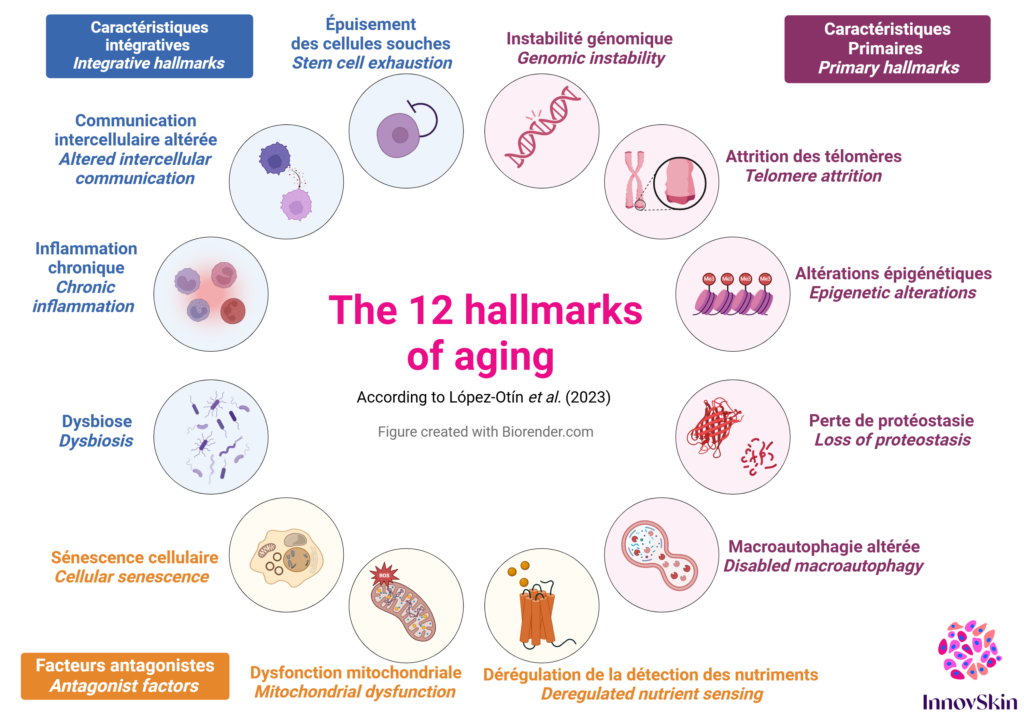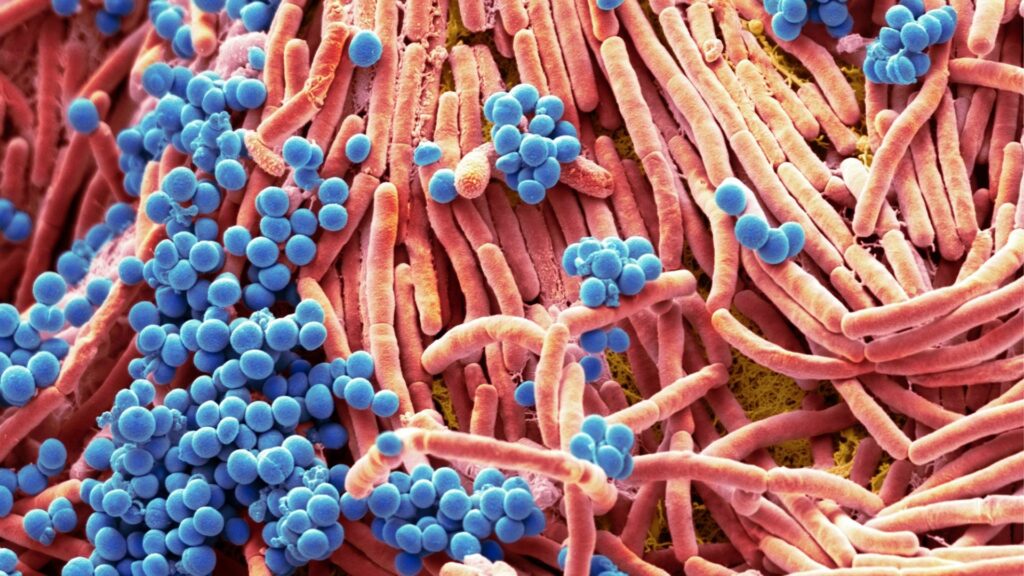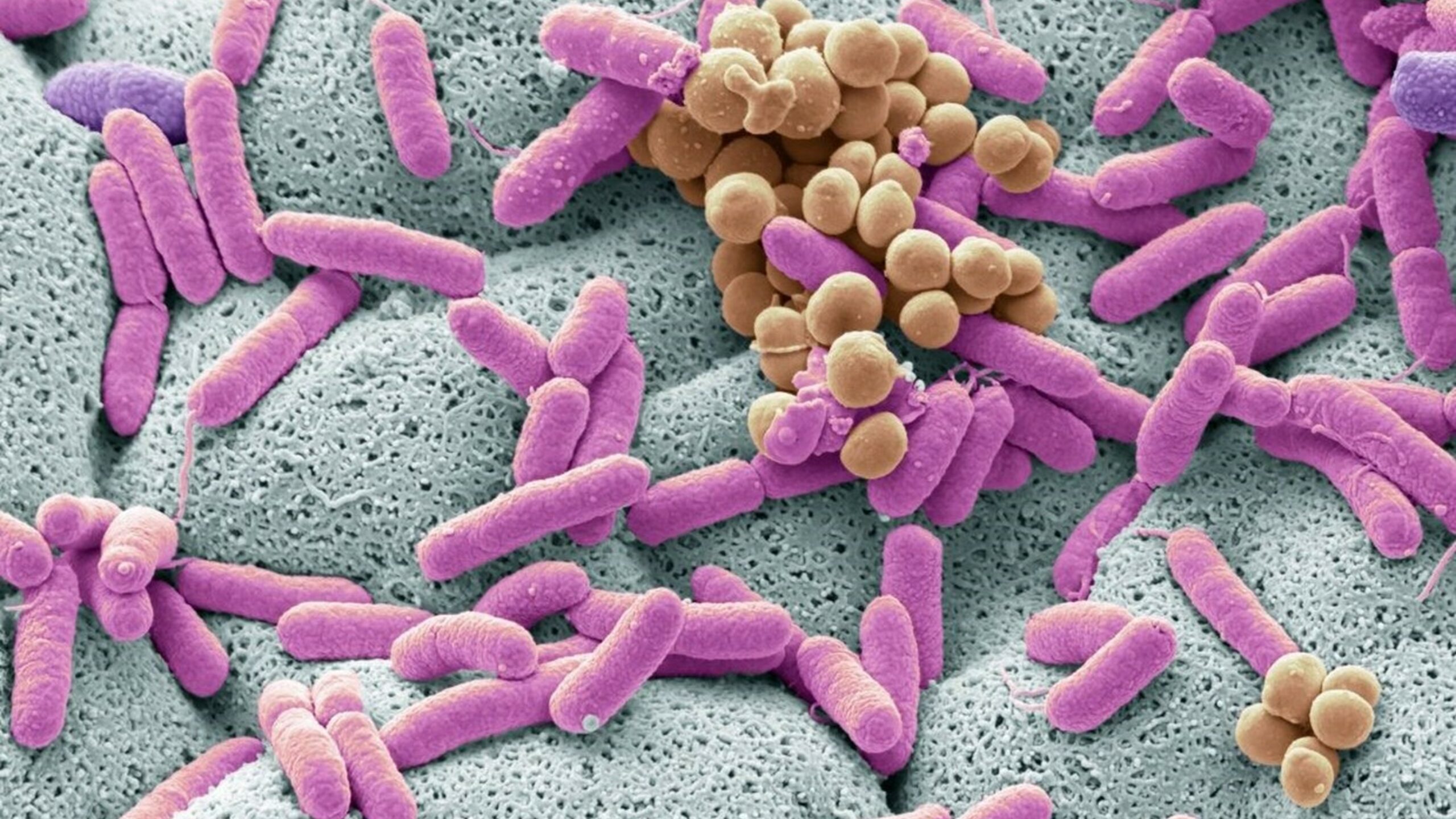Skin longevity goes far beyond the simple pursuit of combating wrinkles or loss of elasticity. It is rooted in preserving the health, resilience, and vitality of the skin throughout life. In a context where consumers are embracing a holistic and sustainable approach to their beauty routines, understanding the mechanisms of aging has become a key element for developing effective cosmetic solutions that respect natural biological processes.
But do you really know the theories and characteristics of aging? That’s precisely what we will explore here, to better understand these mechanisms and their role in skin longevity.
Aging Theories: Uncovering the Mechanisms of Longevity
Understanding the different theories of aging is essential for the cosmetics industry, as it helps identify the underlying biological processes that influence the longevity and appearance of the skin. By exploring these theories, it becomes possible to develop targeted products and solutions that address specific consumer needs while integrating the latest scientific advancements.
Non-Programmed aging theories
Non-programmed aging theories propose that aging results from the accumulation of damage throughout an organism’s life. This damage includes genetic mutations, oxidative stress, and environmental aggressions that progressively alter cellular functions. For instance, free radicals generated by prolonged UV exposure damage cellular components, including DNA, proteins, and lipids in skin cells, thereby accelerating the appearance of wrinkles and loss of elasticity. This perspective aligns with the idea that aging is not an evolutionarily designed process but rather a consequence of the biological systems’ limitations to repair themselves indefinitely.
Programmed aging theories
In contrast, programmed aging theories suggest that aging is determined by a genetic program encoded in an organism’s DNA. According to this view, specific biological processes act as an “aging clock,” regulating lifespan through mechanisms such as telomere shortening, epigenetic changes, and hormonal signaling. This theory implies that aging is an adaptive process embedded in biological evolution.
Developmental program theory
This theory bridges the gap between the two paradigms mentioned above. It proposes that flaws in developmental programs, designed for growth and reproduction, become maladaptive in later life stages, thus driving aging. For example, mechanisms that are crucial during development may persist inappropriately, leading to cellular dysfunction and tissue degeneration.

Danaid theory
Inspired by the myth of the Danaids, who were condemned to endlessly fill leaking containers, this theory describes aging as an inherent limitation of living organisms. It suggests that organisms resemble these cracked containers, unable to retain “life” (symbolized by water) indefinitely. This concept highlights the inevitability of aging due to intrinsic biological constraints.

The Hallmarks of Aging: Identifying and Understanding Them Better
In 2013, the concept of “Hallmarks of Aging” was introduced by López-Otín et al. to provide a systematic framework for studying aging. Recently expanded to twelve hallmarks, it encompasses processes such as genomic instability, telomere attrition, epigenetic alterations, and loss of proteostasis. These mechanisms lie at the core of cellular and tissue aging, including skin aging.
These hallmarks are categorized into three main groups: primary hallmarks, antagonistic factors, and integrative hallmarks.

Figure créée avec Biorender.com.
1. Primary Hallmarks: the fundamental triggers
TThese hallmarks are considered fundamental triggers of aging, directly affecting the structure and function of cells:
- Genomic instability:
- DNA damage (mutations, chromosomal breaks) accumulates over time, impairing cells’ ability to maintain their functional integrity.
- Telomere attrition:
- The progressive shortening of telomeres reduces the ability of cells to divide, leading to senescence or apoptosis.
- Epigenetic alterations:
- Changes in gene expression regulation (DNA methylation, histone modifications) disrupt cellular and tissue functions.
- Loss of proteostasis:
- The decline in mechanisms for protein repair and degradation results in the accumulation of misfolded or damaged proteins, contributing to cellular dysfunction.
- Autophagy dysfunction:
- The inability of cells to eliminate damaged components, including dysfunctional mitochondria, disrupts cellular homeostasis.
2. Antagonistic Factors: altered responses
These processes are responses to cellular and environmental stress. Although they initially play a protective role, their dysregulation promotes aging:
- Cellular senescence:
- Cells stop dividing, but their presence can create an inflammatory microenvironment and impair surrounding tissues.
- Mitochondrial dysfunction:
- The loss of mitochondrial efficiency in energy production (ATP) increases oxidative stress and metabolic disruptions.
- Deregulated nutrient sensing:
- Pathways like mTOR, IGF-1, or AMPK, which regulate energy resource management, become hyperactive or inactive, promoting unbalanced growth and cellular aging.
3. Integrative Hallmarks: global consequences
These mechanisms emerge as consequences of initial disturbances and contribute to the overall functional decline of tissues and the organism:
- Stem cell exhaustion:
- With age, stem cells lose their capacity for renewal and tissue regeneration, compromising repair and maintenance of organs.
- Altered intercellular communication:
- Interactions between cells become less effective, increasing pro-inflammatory signals (inflammaging) and disrupting tissue harmony.
- Chronic inflammation (“inflammaging”):
- Persistent low-grade inflammation triggered by senescent cells and other factors accelerates tissue degradation and loss of function.
- Dysbiosis:
- Imbalances in the microbiome, including skin or gut, disrupt protective barriers and immune functions, worsening aging.

Toward Targeted Skincare Approaches
Understanding these hallmarks enables the development of targeted skincare approaches focused on maintaining cellular integrity, reducing inflammation, and enhancing regeneration capacity. These strategies form the foundation of innovative anti-aging and pro-longevity solutions.
Toward Sustainable and Personalized Cosmetics: The Future of Skincare
Drawing inspiration from the theories and hallmarks of aging allows the cosmetics industry to create science-based solutions that combine efficacy with respect for natural biological processes. Skin longevity, as a concept, goes beyond traditional anti-aging, addressing modern consumers’ aspirations for holistic, sustainable, and personalized care.
At InnovSkin, we believe in the importance of these scientific advancements to design ever more effective skincare solutions. Need support or customized R&D for your cosmetic projects? Contact us today. Together, let’s reveal beauty through science.
References
- Tartiere AG, Freije JMP, López-Otín C. The hallmarks of aging as a conceptual framework for health and longevity research. Front Aging [Internet]. 2024 Jan 15 [cited 2025 Jan 8];5. Available from: https://www.frontiersin.org/journals/aging/articles/10.3389/fragi.2024.1334261/full
- López-Otín C, Blasco MA, Partridge L, Serrano M, Kroemer G. The Hallmarks of Aging. Cell. 2013 Jun 6;153(6):1194–217.
- López-Otín C, Blasco MA, Partridge L, Serrano M, Kroemer G. Hallmarks of aging: An expanding universe. Cell. 2023 Jan 19;186(2):243–78.



